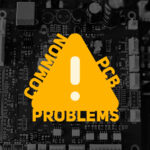How 5G Fosters the Demand of Advanced PCB Manufacturing?

The demand for compact devices that are a perfect mix of form and function has forever been on the rise. More so, when it comes to smart phones, which is a highly competitive industry and where success or failure of new generation phones determines company fortunes. Compact smartphones not just mean ease of use to the end consumer they also facilitate use of larger batteries, high-resolution displays and more.
So far PCB manufacturers have been able to solve the form-design conundrum by using high-density interconnects (popularly known as HDIs) which allow enhanced function per unit area as compared to conventional PCBs. HDIs help leverage fine lines as well as laser-drilled vias and therefore have helped in the evolution of smart phones in their ongoing miniaturization.
However as we move from 4G to 5G compatible smartphones, the entire approach to PCB manufacturing needs to evolve. One challenge is to cater to millimeter-wave frequencies, which so far were almost exclusively used by the military. However 5G devices have made them accessible to billions.
Within the 5G smartphone, there needs to be a tremendous increase in the processing power needed to support the huge volume of 5G data. In turn, this is also likely to impact battery capacity among other things. Odds are, therefore, that the space available for HDI PCBs will be severely impacted. Also there needs to be the highest degree of precision in setting thin PCBs as there can be the risk of degradation of signal.
The answer to these issues can be the use of mSAP or a modified semi-additive process. With the use of mSAP, 5G smartphone manufacturers are able to achieve the desired device density without the fear of degradation of the signal. With current space requirements having reduced, mSAP allows 5G smartphone manufacturers to ensure that there is seamless operation at high frequencies.
The way that it works is that a thin copper layer is coated onto the laminate. This is an additive process as it is plated in the areas where the resist is not applied. The copper that remains in between the conductors is then etched away. The difference in this process is that while in the conventional subtractive process, the trace geometries are chemically defined, here the defining process happens through photolithography, which calls for greater precision and lower signal loss. Also in the subtractive process, the treatment that is used to etch the lines vertically, oftentimes also dissolves the copper horizontally as well. This can result in a wedge-shaped trace, that in turn can lead to a number of anomalies.
With the use of mSAP, PCB manufacturers can overcome all the hurdles that are a part and parcel of using HDI. However, the important thing is to implement mSAP in a manner that production is maximized and costs are kept at an optimal level so that the return on investment is maximized and production efficiencies maintained.
One way to ensure that production efficiencies are not compromised is to invest in advanced manufacturing tools that offer competitive advantage. To this end, direct-imaging systems are being increasingly used that ensure 10-15 micron line spacing is achieved. In turn this can result in high accuracy and enable advanced localized-registration features.
Direct- imaging (or DI systems as they are popularly called) and multi-wavelength light sources result in consistent uniformity as well as high quality. Additionally, through the use of advanced automated-optical-inspection systems any defects can easily be identified and quality assured. Also with the use of 2D metrology, the assessment capabilities can be further enhanced. Its use can ensure that top and bottom conductor widths are maintained and proper sampling techniques are used.
It is also advisable to use automated- optical-shaping (AOS) systems as these go a long way in identifying opens, shorts and other such defects. With the use of AOS systems, the need for manual repair can be taken away as AOS provides for far greater accuracy than manual repair. In fact not only is it more accurate, it also eliminates PCB scrap. With so many advanced HDI manufacturing solutions available, it is imperative that they are all connected via a software so that every touchpoint is taken care of and troubleshooting is easily facilitated.
With the evolution of 5G smartphones, there is certainly a need for advanced PCB manufacturing which can take into account an increased density of the embedded electronics while at the same time ensuring that there is no signal friction. With mSAP these specifications are met while technologies such as DI, AOI, AOS and more go a long way in both maximizing yield as well as keeping costs under check. As new generations of smartphones evolve, mSAP is likely to become the mainstream production process. It is not a surprise then that mSAP technology is slated to become the key investment project for PCB manufacturers.
Get a Free Quote for PCB manufacturing!








